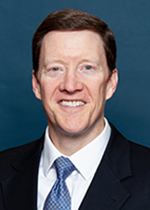
Several of our attorneys have just returned from Tucson, AZ, and the annual community association Law Seminar. This program, presented by the College of Community Association Lawyers and the Community Associations Institute, gets better every year. There were many excellent sessions, including discussions of condominium water/leak issues, changes to the FDCPA (Fair Debt Collection Practices Act), adequate reserves and reserve studies, smoking bans, and more. One of our attorneys’ goals each year is to return with several “nuggets” of useful information to benefit clients.
One especially intriguing session was on “Safety and Security Issues” in community associations, particularly in the aftermath of the Trayvon Martin case. The presenters were Jason Fisher from Maryland and George Nowack from Georgia, both highly respected attorneys in private practice, and Jennifer Wojciechowski (also an attorney) with Community Association Underwriters of America. The session examined issues of safety, security, and surveillance in homeowner and condominium associations. Like any good community association presentation, the session raised as many questions as it answered, including:
- Is your “security” camera really securing the premises? (That is, is someone watching the live camera feed?)
- Do “safety committees” or a “community watch” ensure that owners are safe from crime?
- Can denial of architectural requests to install window bars, exterior locks, or better lighting lead to association liability if the owner is a victim of crime?
- What are the association’s liabilities if an owner or guest is attacked by a third party on common property?
The answers to these questions can vary by state and by the status of the person injured. Without getting too legal, different states treat individuals differently depending on whether the person is considered an “invitee” (a person on the land of another for a lawful purpose of mutual benefit), a “licensee” (a person on the land of another with permission, such as a guest), or a “trespasser” (a person on the land of another without permission).
A major takeaway, however, is that community associations generally aren’t in the business of providing round-the-clock security for members. Most associations have neither the time, money, nor authority in governing documents to take on such a responsibility. However, certain practices, such as the use of lobby attendants or “security” cameras, may give the appearance that the association is a security provider. In other words, voluntary acts by the association may create an assumption that is provides security, which could create liability that otherwise would not exist.
Because the relationship between an owner and the association is contractual (because of the Declaration), one suggestion was that associations consider amending their Declaration to include a “no security” provision. Such language, which I’ll call a “Nowack amendment,” basically provides that the association may provide security, but has no duty to provide security and is not a provider of security, and that the obligation for security for an owner lies with the owner. (The language is a bit more legal than that, but you get the picture.) While no specific language will work for all situations, such Declaration wording has been held valid in another state to shield the association from liability due to harm inflicted on an owner by a third party.
If your association or circumstances make such language of interest, feel free to give us a call to discuss.

